-
 Bitcoin
Bitcoin $107,810.8710
-1.45% -
 Ethereum
Ethereum $2,531.4386
-1.75% -
 Tether USDt
Tether USDt $1.0000
-0.03% -
 XRP
XRP $2.2542
-0.99% -
 BNB
BNB $659.1350
-0.50% -
 Solana
Solana $148.5456
-2.40% -
 USDC
USDC $0.9999
-0.02% -
 TRON
TRON $0.2868
-0.44% -
 Dogecoin
Dogecoin $0.1666
-3.65% -
 Cardano
Cardano $0.5751
-2.36% -
 Hyperliquid
Hyperliquid $37.6845
-5.51% -
 Bitcoin Cash
Bitcoin Cash $494.9448
-0.65% -
 Sui
Sui $2.8396
-3.31% -
 Chainlink
Chainlink $13.2423
-2.59% -
 UNUS SED LEO
UNUS SED LEO $9.0482
0.02% -
 Stellar
Stellar $0.2467
-2.44% -
 Avalanche
Avalanche $17.8165
-3.63% -
 Shiba Inu
Shiba Inu $0.0...01158
-2.41% -
 Toncoin
Toncoin $2.7397
-3.42% -
 Hedera
Hedera $0.1560
-2.73% -
 Litecoin
Litecoin $85.8559
-2.34% -
 Monero
Monero $315.3710
-2.30% -
 Dai
Dai $1.0001
0.00% -
 Polkadot
Polkadot $3.3443
-2.03% -
 Ethena USDe
Ethena USDe $1.0001
0.01% -
 Bitget Token
Bitget Token $4.2888
-3.73% -
 Uniswap
Uniswap $7.3388
-1.57% -
 Aave
Aave $278.2986
-3.05% -
 Pepe
Pepe $0.0...09807
-3.67% -
 Pi
Pi $0.4563
-2.39%
How to find potential NFT projects through data analysis?
Analyzing NFT projects involves sales data, social media engagement, and market trends to identify those with strong growth potential and community support.
Apr 18, 2025 at 12:08 am
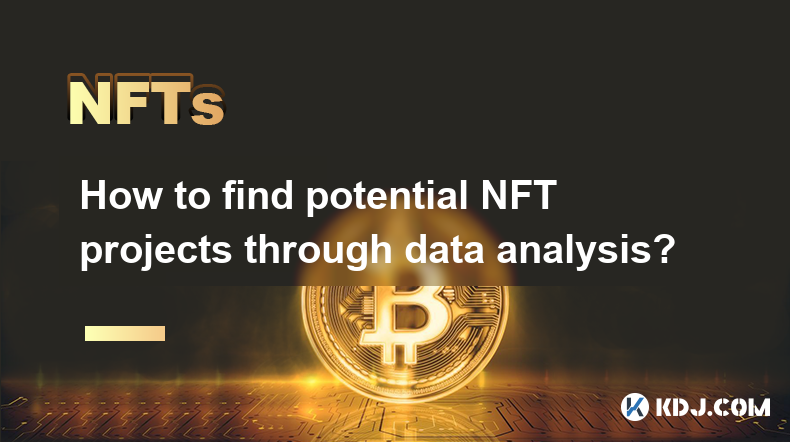
Introduction to NFT Data Analysis
Finding potential NFT projects through data analysis involves a systematic approach to evaluating various data points that can indicate the potential success or failure of a project. By understanding the key metrics and trends, investors and enthusiasts can make more informed decisions. The process involves analyzing sales data, social media engagement, and market trends to pinpoint projects that show promising growth potential.
Collecting Relevant Data
The first step in analyzing potential NFT projects is to gather relevant data. This includes:
- Sales data: Information on the volume and price of NFTs sold, which can be found on marketplaces like OpenSea, Rarible, and SuperRare.
- Social media engagement: Metrics such as likes, shares, comments, and follower growth on platforms like Twitter, Discord, and Instagram.
- Market trends: Overall trends in the NFT market, including popular categories and emerging artists or projects.
To collect this data, you can use various tools and APIs provided by the marketplaces and social media platforms. For example, OpenSea offers an API that allows you to pull sales data, while tools like TweetDeck can help monitor social media activity.
Analyzing Sales Data
Sales data is a critical indicator of an NFT project's health and potential. Here’s how to analyze it:
- Volume of Sales: Look at the total number of NFTs sold over a period. A high volume of sales can indicate strong demand and interest in the project.
- Average Sale Price: Calculate the average price at which NFTs are sold. A rising average sale price can suggest increasing value and investor confidence.
- Floor Price: The lowest price at which an NFT from a collection is currently listed for sale. A stable or rising floor price can be a sign of a healthy market for the project.
To perform this analysis, you can use spreadsheet software like Microsoft Excel or Google Sheets. Import the sales data into the spreadsheet and use functions to calculate these metrics. For example, to find the average sale price, you can use the AVERAGE function on the column containing the sale prices.
Evaluating Social Media Engagement
Social media engagement can provide insights into the community's interest and support for an NFT project. Here’s how to evaluate it:
- Follower Growth: Monitor the rate at which the project’s social media accounts are gaining followers. Rapid growth can indicate increasing interest and popularity.
- Engagement Rate: Calculate the engagement rate by dividing the total number of likes, comments, and shares by the number of followers. A high engagement rate suggests an active and supportive community.
- Sentiment Analysis: Use tools like Brandwatch or Talkwalker to analyze the sentiment of posts and comments related to the project. Positive sentiment can be a good indicator of community support.
To gather this data, you can use social media analytics tools provided by platforms like Twitter Analytics or third-party tools like Hootsuite. Import the data into a spreadsheet and use formulas to calculate the engagement rate and track follower growth over time.
Identifying Market Trends
Understanding broader market trends can help you identify NFT projects that are likely to gain traction. Here’s how to do it:
- Popular Categories: Look at which categories of NFTs are currently trending, such as art, music, or gaming. Projects within popular categories may have a higher chance of success.
- Emerging Artists and Projects: Identify new artists or projects that are gaining attention. Early investment in these can yield significant returns.
- Market Sentiment: Use tools like Google Trends or CoinGecko to gauge the overall sentiment and interest in NFTs. Positive market sentiment can drive demand for NFT projects.
To identify these trends, you can use a combination of market research and data analysis tools. For example, you can use Google Trends to see which NFT-related search terms are gaining popularity, or use CoinGecko to track the performance of different NFT categories.
Combining Data for Insights
Once you have collected and analyzed the data, the next step is to combine it to gain deeper insights into the potential of NFT projects. Here’s how to do it:
- Correlation Analysis: Look for correlations between different data points, such as sales volume and social media engagement. A strong correlation can indicate a robust project with a supportive community.
- Trend Analysis: Identify trends over time, such as increasing sales volume or rising social media engagement. Consistent upward trends can be a sign of a project with strong growth potential.
- Comparative Analysis: Compare the performance of different NFT projects to identify which ones are outperforming others. Projects that consistently outperform their peers may be worth further investigation.
To perform these analyses, you can use advanced data analysis tools like Python with libraries such as Pandas and Matplotlib. Import your data into Python, and use these libraries to perform correlation, trend, and comparative analyses.
Frequently Asked Questions
Q: How can I access the APIs needed for data collection?
A: Many NFT marketplaces and social media platforms offer APIs that you can access by registering for a developer account. For example, OpenSea provides an API that you can use to pull sales data after signing up for a developer account on their website.
Q: What are some free tools I can use for social media analysis?
A: There are several free tools available for social media analysis, including Twitter Analytics for tracking follower growth and engagement on Twitter, and Google Trends for gauging overall interest in NFT-related topics.
Q: How often should I update my data analysis for NFT projects?
A: It’s a good practice to update your data analysis regularly, ideally on a weekly basis, to stay current with the latest trends and developments in the NFT market. This will help you make timely and informed decisions about potential investments.
Q: Can I use data analysis to predict the future success of an NFT project?
A: While data analysis can provide valuable insights into the current health and potential of an NFT project, it cannot predict future success with certainty. It’s important to use data analysis as one tool among many in your decision-making process.
Disclaimer:info@kdj.com
The information provided is not trading advice. kdj.com does not assume any responsibility for any investments made based on the information provided in this article. Cryptocurrencies are highly volatile and it is highly recommended that you invest with caution after thorough research!
If you believe that the content used on this website infringes your copyright, please contact us immediately (info@kdj.com) and we will delete it promptly.
- KuCoin, AI Incentives, and Gaming RWA: A New Era?
- 2025-07-08 14:30:12
- Meme Token Mania: SPX6900, TOKEN6900, and the Degens Driving Crypto's Brain Rot
- 2025-07-08 14:30:12
- Bitcoin Gains and Strategy Reports: What's the Haps?
- 2025-07-08 15:10:12
- Ripple, XRP ETF, Latest Data: Hopes Fade but Innovation Blooms?
- 2025-07-08 15:10:12
- Eric Trump, Bitcoin Asia, and Hong Kong: A Power Trio Shaping Crypto's Future
- 2025-07-08 14:50:12
- Pumpfun, Token Sale, and Gate Exchange: What's the Deal?
- 2025-07-08 14:50:12
Related knowledge
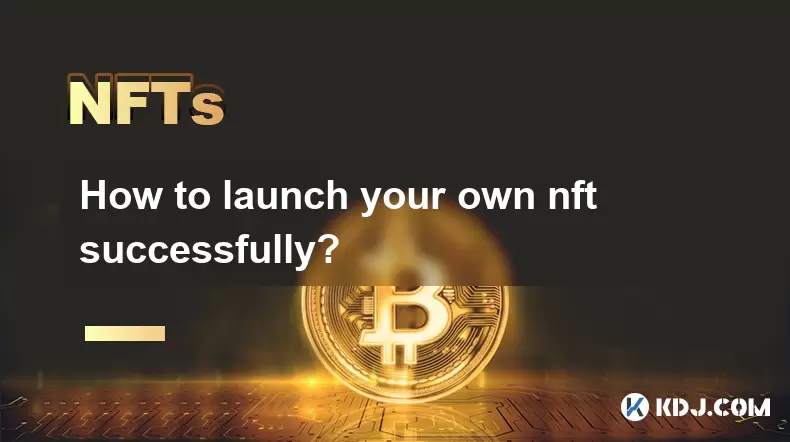
How to launch your own nft successfully?
Jul 07,2025 at 02:50am
Understanding the Basics of NFTsBefore diving into the process of launching your own NFT, it's crucial to understand what NFTs (Non-Fungible Tokens) are. NFTs are unique digital assets that represent ownership or proof of authenticity of a specific item or piece of content, such as art, music, videos, or even virtual real estate. Unlike cryptocurrencies...
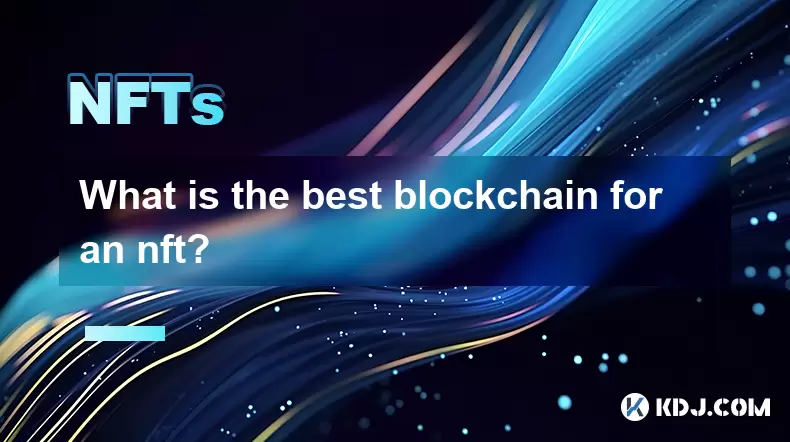
What is the best blockchain for an nft?
Jul 07,2025 at 12:22pm
Understanding the Criteria for Evaluating Blockchains for NFTsWhen determining the best blockchain for an NFT, several key factors come into play. These include transaction speed, cost of gas fees, scalability, security, environmental impact, and ecosystem maturity. Each blockchain offers a unique combination of these attributes, which directly affects ...
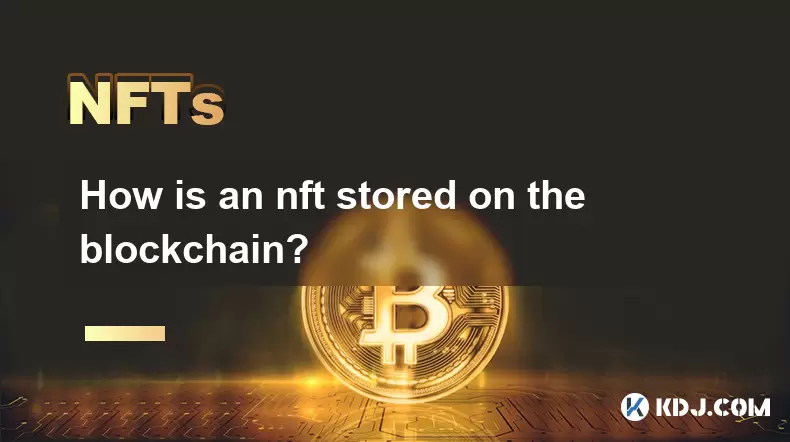
How is an nft stored on the blockchain?
Jul 01,2025 at 04:07am
How Is an NFT Stored on the Blockchain?Non-Fungible Tokens (NFTs) have revolutionized how digital assets are owned, verified, and transferred. Understanding how an NFT is stored on the blockchain provides clarity on its uniqueness, immutability, and traceability. Understanding the Basic Structure of an NFTAn NFT is a unique token that represents ownersh...
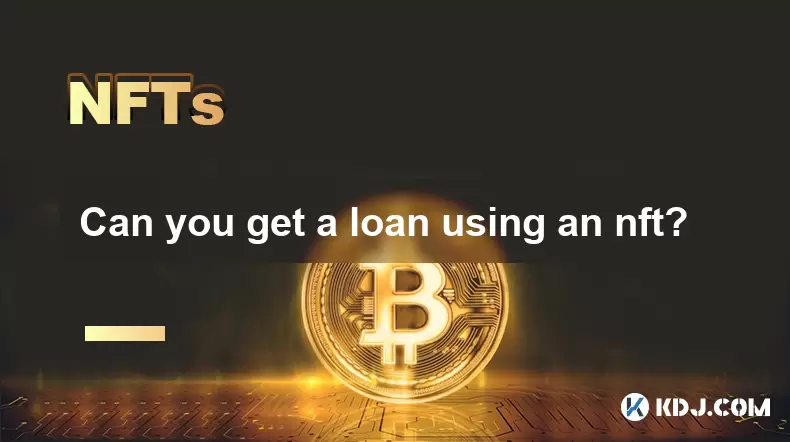
Can you get a loan using an nft?
Jul 05,2025 at 07:32pm
Understanding the Concept of NFT-Based LoansThe idea of using an NFT as collateral for a loan has gained traction in the decentralized finance (DeFi) space. NFTs, or non-fungible tokens, represent unique digital assets on the blockchain. While they are often associated with digital art, collectibles, and virtual real estate, their utility is expanding i...
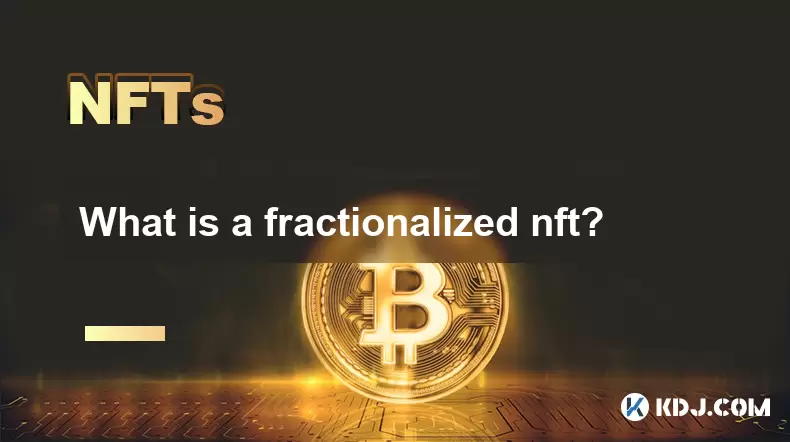
What is a fractionalized nft?
Jul 06,2025 at 10:50am
Understanding the Concept of Fractionalized NFTsA fractionalized NFT refers to a process where a single non-fungible token (NFT) is divided into multiple smaller, tradable parts. These parts represent fractional ownership of the original NFT. This innovation allows high-value NFTs to be accessible to a broader audience by enabling shared ownership. Inst...
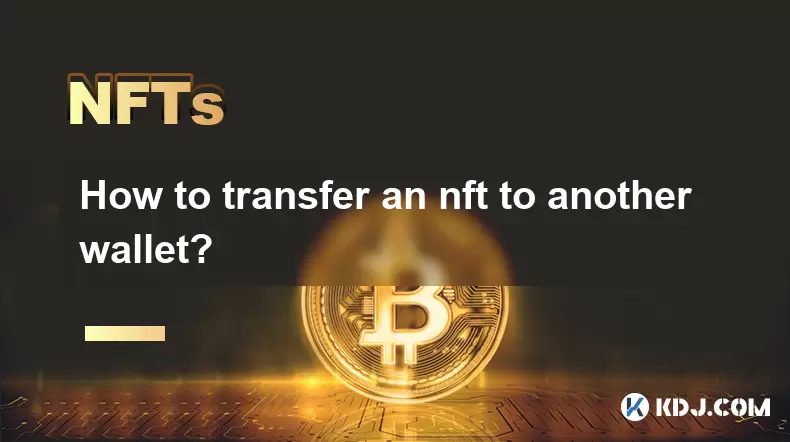
How to transfer an nft to another wallet?
Jul 01,2025 at 10:21am
Understanding the Basics of NFT TransfersTransferring an NFT (Non-Fungible Token) from one wallet to another is a common operation in the blockchain space. Before proceeding, it's crucial to understand what an NFT represents: a unique digital asset stored on a blockchain, typically Ethereum or other compatible chains like Binance Smart Chain or Solana. ...

How to launch your own nft successfully?
Jul 07,2025 at 02:50am
Understanding the Basics of NFTsBefore diving into the process of launching your own NFT, it's crucial to understand what NFTs (Non-Fungible Tokens) are. NFTs are unique digital assets that represent ownership or proof of authenticity of a specific item or piece of content, such as art, music, videos, or even virtual real estate. Unlike cryptocurrencies...

What is the best blockchain for an nft?
Jul 07,2025 at 12:22pm
Understanding the Criteria for Evaluating Blockchains for NFTsWhen determining the best blockchain for an NFT, several key factors come into play. These include transaction speed, cost of gas fees, scalability, security, environmental impact, and ecosystem maturity. Each blockchain offers a unique combination of these attributes, which directly affects ...

How is an nft stored on the blockchain?
Jul 01,2025 at 04:07am
How Is an NFT Stored on the Blockchain?Non-Fungible Tokens (NFTs) have revolutionized how digital assets are owned, verified, and transferred. Understanding how an NFT is stored on the blockchain provides clarity on its uniqueness, immutability, and traceability. Understanding the Basic Structure of an NFTAn NFT is a unique token that represents ownersh...

Can you get a loan using an nft?
Jul 05,2025 at 07:32pm
Understanding the Concept of NFT-Based LoansThe idea of using an NFT as collateral for a loan has gained traction in the decentralized finance (DeFi) space. NFTs, or non-fungible tokens, represent unique digital assets on the blockchain. While they are often associated with digital art, collectibles, and virtual real estate, their utility is expanding i...

What is a fractionalized nft?
Jul 06,2025 at 10:50am
Understanding the Concept of Fractionalized NFTsA fractionalized NFT refers to a process where a single non-fungible token (NFT) is divided into multiple smaller, tradable parts. These parts represent fractional ownership of the original NFT. This innovation allows high-value NFTs to be accessible to a broader audience by enabling shared ownership. Inst...

How to transfer an nft to another wallet?
Jul 01,2025 at 10:21am
Understanding the Basics of NFT TransfersTransferring an NFT (Non-Fungible Token) from one wallet to another is a common operation in the blockchain space. Before proceeding, it's crucial to understand what an NFT represents: a unique digital asset stored on a blockchain, typically Ethereum or other compatible chains like Binance Smart Chain or Solana. ...
See all articles

























































































